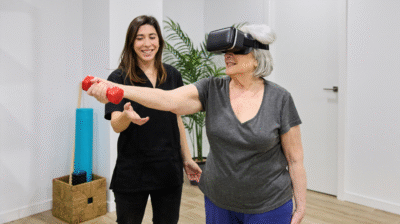Teen group therapy is different than that of other age groups. It can often be more difficult to get your teen-aged clients to open up, feel connected, and flourish in this type of setting. Icebreaker games for teen group therapy should be the jumping-off point for any therapist hoping to get their members to connect. These facilitated exercises are meant to help bring together the members of your group so that they feel more united with one another. For therapists, icebreaker games can be a great way to learn more about each client, help them feel comfortable opening up, and make them familiar with each person they are to interact with.
What are icebreakers and why are they important?
Icebreakers are an incredibly important component of teen group therapy as they help form bonds between members. They encourage a positive group atmosphere that fosters comfort, growth, and acceptance. The way they do this is by generating conversations and interaction between group members, where they learn about one another and what they have in common along with their shared experiences.
This feeling of connectedness can help members, who might not be familiar with group therapy, feel comfortable in the new setting, encouraging them to engage throughout future sessions. Below, therapists can find great examples of icebreakers for teen group therapy.
Icebreakers for teen group therapy:
Fact or fiction
This exercise is also referred to as “two truths and a lie.” Therapists should ask everyone in their teen group therapy session to write three things about themselves on a piece of paper, two of which are true and one is false. Therapists should encourage their group members to be creative and think outside of the box. Each member should then take turns reading their three “facts” about themselves. The other group members should then try to guess which one is fiction. This is a great exercise for learning unique details about each member.
Interview pairs
In this teen group therapy exercise, therapists should divide their members into pairs. The two members should take five minutes to interview one another. During this time the pair should learn three interesting things about their partner that they will then report back to the larger group when the time is up. Similar to the last exercise, this is meant to help group members learn about one another.
The question web
For this exercise, therapists will need a ball of yarn long enough to connect each group member. The entire group should form a circle. One person will grab hold of the end of the thread. While holding on, they will throw the ball of yarn to another group member. Each one will hold onto a part of the thread while the tossing continues. It will continue until each member has a grip on the thread and a “web” has been formed in the middle of the circle. Each time the yarn is tossed, the thrower will ask a question and the person catching the ball will answer it. This exercise engages the senses, helping group members to remember these facts about each other more effectively.
Find someone who
Therapists should create a “find someone who” worksheet. This worksheet will have a list of different scenarios and facts that might apply to a number of group members. These facts should be non-specific or general. For example, the list might have instructions to “find someone whose favorite color is blue,” or “find someone who likes to travel.” Each group member has to locate someone else in the group to who that statement applies and have them sign their name next to it. This is a great name-learning exercise.
This is me collage
If members of your teen group therapy sessions fall on the more creative side, a “this is me collage” might be appropriate. Therapists should bring a stack of magazines, newspapers, and ads along with glue, paper, scissors, and markers. Each client should take time during the session to make a collage that describes their personality, interests, and goals.
Tall stories
“Tall Stories” is a teen group therapy storytelling exercise that engages every member of the group. The therapist starts a story with a sentence that ends without resolution. For example, “A woman was walking on the beach when…” The next person will pick up the story where the leader left off and then start the next statement. “…she came across a huge seashell. She noticed it looked different than the rest because…” Each member of the group should get a turn contributing to the story.
Worries in a hat
Worries in a hat is a more vulnerable exercise in which the purpose is to identify what common worries, emotions, and fears exist across the group. The therapist should bring a “hat” or a container of some sort, paper, and pencils for each group member. Each member should write down what they are feeling on strips of paper, fold them up, and add them to the hat anonymously. The therapist will then read those pieces of paper allowed to the group. This exercise can also be used to identify goals.
Teen group therapy can be difficult for clients who have never participated in it before and even for those who have. Therapists should use icebreaker exercises for teen group therapy to help their clients start to feel more comfortable in the group setting. Doing so will have a lasting impact on how they relate to the other members and their progress throughout each session.





